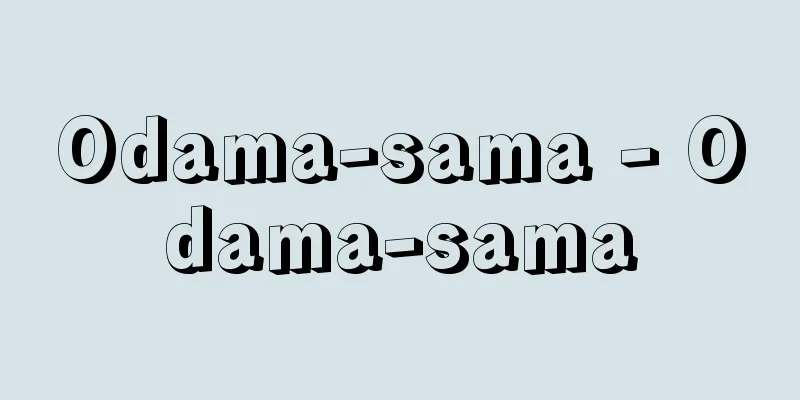Titration - titration

|
This refers to the method or procedure used in volumetric analysis. The most common procedure is to drip a solution of a substance B (of known concentration, i.e., a standard solution) that reacts quantitatively with A from a burette into a solution (sample) containing the test substance A, and measure the amount of B added until the entire amount of A has finished reacting quantitatively (the equivalence point, actually the end point), thereby quantifying A. The equivalence point is determined by the color change of an indicator or other physicochemical means, and the concentration is calculated from this amount (there are also titration methods that do not use such procedures, such as coulometric titration, gas titration, and gravimetric titration). Any reaction that proceeds quantitatively and quickly at room temperature or slightly warmed conditions and whose end point can be accurately known can be used, and depending on the type of reaction, it is classified into neutralization titration (acid-base titration), oxidation-reduction titration, precipitation titration, complexometric titration (including chelate titration, which uses a titration reagent that forms stable chelates with many metal ions), etc. They are also named according to the name of the titrant used (e.g. iodometric titration, permanganate titration) or the method used to detect the end point of the reaction (e.g. potentiometric titration, amperometric titration, high frequency titration, thermometric titration). [Takada Takeo] "Analytical Chemistry 1: Basics" by G.D. Christian, supervised by Masahiko Tsuchiya et al. (1989, Maruzen) " "Introduction to Analytical Chemistry Series: Quantitative Analysis" edited by the Japan Society for Analytical Chemistry (1994, Asakura Publishing)" [Reference] | | | | | |Neutralization | | | |Current | | | |A curve that shows how a certain characteristic of a titrant changes due to titration is called a titration curve. Usually, the vertical axis shows the value of the characteristic, and the horizontal axis shows the amount of titrant. The figure shows a titration curve that shows the change in pH when a strong base acid is added to a strong acid solution . Titration curve Source: Shogakukan Encyclopedia Nipponica About Encyclopedia Nipponica Information | Legend |
|
容量分析を行う際に用いられる方法あるいはその操作をいう。もっとも普通に行われる操作は、被験物質Aを含む溶液(試料)に、Aと定量的に反応する物質Bの溶液(濃度既知のもの、すなわち標準液)をビュレットから滴下し、Aの全量が定量的に反応し終わる(当量点、現実には終点)までに加えられたBの量を測定し、これによりAを定量する。当量点は指示薬の変色やその他物理化学的手段で求め、この量から計算によって濃度を求める(このような操作をとらない滴定法もある。たとえば、電量滴定、ガス滴定、重量滴定など)。常温あるいはすこし温めた状態で定量的に、かつ速やかに進む反応であって、反応の終点を正しく知ることのできる反応はすべて利用でき、反応の型によって中和滴定(酸塩基滴定)、酸化還元滴定、沈殿滴定、錯滴定(多くの金属イオンと安定なキレートを生成する滴定試薬を用いるキレート滴定を含む)などに分類される。また滴定剤の名称(たとえばヨウ素滴定、過マンガン酸塩滴定)や反応の終了点の検知に用いる方法(たとえば電位差滴定、電流滴定、高周波滴定、温度滴定)などによってもよばれている。 [高田健夫] 『G・D・クリスチャン著、土屋正彦他監訳『分析化学1 基礎』(1989・丸善)』▽『日本分析化学会編『入門分析化学シリーズ 定量分析』(1994・朝倉書店)』 [参照項目] | | | | | | | | | | | | | |滴定溶液のある特性が滴定によって変化するようすを表す曲線を滴定曲線という。普通は縦軸にその特性の数値を、横軸に滴定試薬の量をとる。図は強酸溶液に強塩基酸を加えていったときのpH変化を示す滴定曲線である©Shogakukan"> 滴定曲線 出典 小学館 日本大百科全書(ニッポニカ)日本大百科全書(ニッポニカ)について 情報 | 凡例 |
<<: Friend or foe identification device
>>: Three Hundred Li Across Enemy Lines
Recommend
General partnership - Goumeigaisha
A company with a unified organization, consisting...
Rice Ceremony - Inasakugirei
This refers to the magical and religious rites pe...
Standing song - Tateuta
〘 noun 〙 A person who takes the lead in Nagauta, t...
Greylag goose - Greylag goose
A bird of the Anatidae family (illustration). It b...
Jikusen Bonsen
Year of death: 1348.8.11 (Jiwa 4/Shohei 3.7.16) Ye...
Denjiro Okochi - Ookochi Denjiro
A film actor. His real name was Obe Masuo. He was...
Yang Guifei
[1][1] The wife of Emperor Xuanzong of the Tang Dy...
Intention tremor
Tremors are tremors in the limbs that do not occur...
Hatra
Registered as a World Heritage Site (cultural heri...
Shunso Hishida
A Meiji era Japanese painter. His real name was M...
Taboo - Taboo (English spelling)
Taboo is originally a Polynesian word, a combinat...
Gurney, G.
… The development of steam cars then shifted from...
Cyrtosperma edule
… [Mitsuru Hotta]... *Some of the terminology tha...
Naturalism
In the broadest sense, this is a position that con...
Connaught
…The area is about 17,000 km2, and the population...









